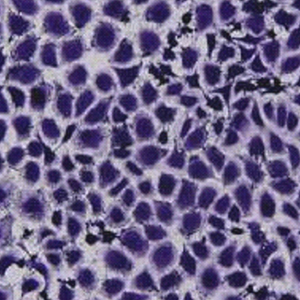DPY30 promotes the growth and survival of osteosarcoma cell by regulating the PI3K/AKT signal pathway

Submitted: 27 March 2022
Accepted: 11 September 2022
Published: 22 December 2022
Accepted: 11 September 2022
Abstract Views: 743
PDF: 439
Supplementary: 63
HTML: 14
Supplementary: 63
HTML: 14
Publisher's note
All claims expressed in this article are solely those of the authors and do not necessarily represent those of their affiliated organizations, or those of the publisher, the editors and the reviewers. Any product that may be evaluated in this article or claim that may be made by its manufacturer is not guaranteed or endorsed by the publisher.
All claims expressed in this article are solely those of the authors and do not necessarily represent those of their affiliated organizations, or those of the publisher, the editors and the reviewers. Any product that may be evaluated in this article or claim that may be made by its manufacturer is not guaranteed or endorsed by the publisher.
Similar Articles
- A. Amaroli, M.G. Chessa, Detection and characterisation of NAD(P)H-diaphorase activity in Dictyostelium discoideum cells (Protozoa) , European Journal of Histochemistry: Vol. 56 No. 4 (2012)
- Ewing Duque-Díaz, Hernán Hurtado Giraldo, Linda P. Rocha-Muñoz, Rafael Coveñas, Glyphosate, AMPA and glyphosate-based herbicide exposure leads to GFAP, PCNA and caspase-3 increased immunoreactive area on male offspring rat hypothalamus , European Journal of Histochemistry: Vol. 66 No. 4 (2022)
- Fengqin Yan, Hong Zhu, Yingxia He, Qinqin Wu, Xiaoyu Duan, Combination of tolvaptan and valsartan improves cardiac and renal functions in doxorubicin-induced heart failure in mice , European Journal of Histochemistry: Vol. 66 No. 4 (2022)
- M. Malatesta, M. Giagnacovo, M. Costanzo, B. Cisterna, R. Cardani, G. Meola, Muscleblind-like1 undergoes ectopic relocation in the nuclei of skeletal muscles in myotonic dystrophy and sarcopenia , European Journal of Histochemistry: Vol. 57 No. 2 (2013)
- E Rossi, A Ubiali, P Balzarini, M Cadei, F Alpi, PG Grigolato, High-level detection of gene amplification and chromosome aneuploidy in extracted nuclei from paraffin-embedded tissue of human cancer using FISH: a new approach for retrospective studies , European Journal of Histochemistry: Vol. 49 No. 1 (2005)
- Pingping Li, Jimin Zheng, Yun Bai, Dingxin Wang, Zijin Cui, Yueqin Li, Jian Zhang, Yuzhen Wang, Characterization of kynurenine pathway in patients with diarrhea-predominant irritable bowel syndrome , European Journal of Histochemistry: Vol. 64 No. s2 (2020): Special Collection on Stem Cells and Regenerative Medicine
- Jianyu Zou, Zhenbin Cai, Zhi Liang , Yaozhong Liang, Guowei Zhang, Jie Yang, Yunlong Zhang, Hongsheng Lin, Minghui Tan, Different fusion tags affect the activity of ubiquitin overexpression on spastin protein stability , European Journal of Histochemistry: Vol. 65 No. 4 (2021)
- Bita Moudi, Zahra Heidari, Hamidreza Mahmoudzadeh-Sagheb, Seyed-Moayed Alavian, Kamran B. Lankarani, Parisa Farrokh, Jens Randel Nyengaard, Concomitant use of heat-shock protein 70, glutamine synthetase and glypican-3 is useful in diagnosis of HBV-related hepatocellular carcinoma with higher specificity and sensitivity , European Journal of Histochemistry: Vol. 62 No. 1 (2018)
- A. Galia, A.E. Calogero, R. Condorelli, F. Fraggetta, A. La Corte, F. Ridolfo, P. Bosco, R. Castiglione, M. Salemi, PARP-1 protein expression in glioblastoma multiforme , European Journal of Histochemistry: Vol. 56 No. 1 (2012)
- Jinshuang Li, Dawei Xu, Ce Shi, Chunqi Cheng, Ziheng Xu, Xingjuan Gao, Yong Cheng, Alarin regulates RyR2 and SERCA2 to improve cardiac function in heart failure with preserved ejection fraction , European Journal of Histochemistry: Vol. 68 No. 4 (2024)
<< < 19 20 21 22 23 24 25 26 27 28 > >>
You may also start an advanced similarity search for this article.

 https://doi.org/10.4081/ejh.2023.3413
https://doi.org/10.4081/ejh.2023.3413











